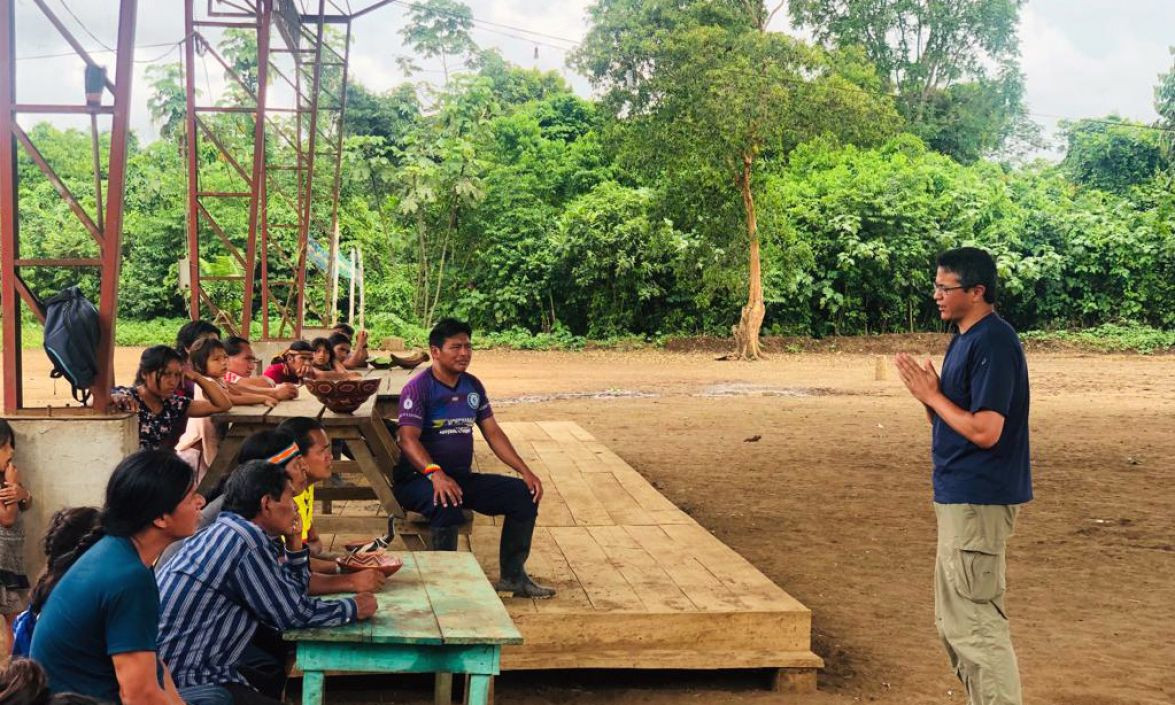A new Lancet study details the significance of malaria interventions for sustained malaria control. In Amazonian Peru, malaria control preventions helped reduce the incidence of the deadly parasitic disease by 78%. That is, until the programs ceased to operate. Within four years of the programs being de-funded, malaria rates were back where they started, as detailed in the April 2023 edition of The Lancet Regional Health Americas. Dr. William Pan, a Duke environmental health researcher and member of the Institute for Health Modeling and Climate Solutions Expert Network, worked on the report and recently shared his thoughts on what the findings mean for health in the context of climate change.

Q: What is the significance of this latest Lancet report?
Overall, the study shows a clear relationship between malaria interventions and reduction in cases. Even with increasing transmission potential caused by climate change, interventions serve as a strong, adaptation tool that buffers the impact that climate can play in increasing human morbidity.
Three key findings in our study include: First, malaria control interventions can be highly effective in the Amazon, especially if they are implemented at the community level. Second, sustained funding is critical to maintain malaria control programs, and when programs are funded by international donors, there needs to be a clear plan for long-term sustainable funding after those donors withdraw. Third, climate change increases malaria transmission and interventions can serve as a buffer (or adaptation strategy) for increased transmission risk.
However, I do want to say that the climate-malaria relationship is not always straightforward. In the Amazon, we observed an average temperature increase over a ten-year period (0.5C) that concurrently caused high variability in rainfall. When you combine this with anthropogenic land-use change, you create ideal conditions in which malaria vector habitat and people to occupy the same space, which increases transmission potential.
Q: What did you find most encouraging about the report?
With sustained funding for malaria control at the community level, significant declines in Malaria transmission can be achieved.
Q: What did you find most discouraging about the report?
There was no plan for bridge funding after the global fund withdrew from Perú, causing a rapid collapse of progress by the interventions.
Q: As part of the study, you traveled to Peru. Can you tell us about your experience?
Some of my closest friends in life are Peruvian and live in Peru. I love visiting and working in the country since I stay with friends, who are essentially like family, I eat delicious food, and I get to work in some amazing places and with some amazing people.
But Peru has some serious social and economic problems, and in my view as an outsider, many of those problems, originate from the vast economic disparities that exist between the Amazon and Highland regions of the country versus the wealthier Coastal urban centers. I don’t claim to have a solution to their problems, but in terms of health disparities, it’s not surprising that investments in healthcare in places like the Amazon are seriously underfunded, since it is a mirror image of the economic disparities that exist for the country as a whole. As I have worked in many other countries throughout Latin America, this pattern is unfortunately a common one. But what gives me hope is that by working in vulnerable communities and trying to understand their needs to have a healthier and more productive life, we can create more cost-effective tools that can actually improve human and environmental health.
Q: The malaria resurgence began after the end of the Global Fund’s support for the project. Can you talk about the significance of investing in interventions?
Every sports franchise has a farm team. The New York Yankees, Manchester, United, PSG, the list goes on. These are investments for sustaining excellence in sports. You don’t see those franchises investing for say, 4-5 years and then say, “I think I’ll stop now” and assume that their success will be sustained. Health interventions are the same, you need an investment to create an initial impact, and you need sustained support to maintain impact and to keep improving.
Q: This study also assessed the impact of climate change on malaria. What did it find?
We observed a 0.5C average temperature increase in the study region AND we observed an increase in rainfall variability (i.e., more rainfall events with greater precipitation). Regardless of the intervention period (i.e., per or post), we see that these two factors were associated with higher levels of transmission. In the amazon, the temperature increase likely has little to no effect on transmission since the Amazon is almost always in an ideal temperature range for malaria transmission. However, the disruption in hydrological cycles means that flooding was more likely in districts experiencing higher rainfall events, which leads to more habitat for mosquito reproduction. Thus, in regions where deforestation is (or has) occurred, which is where the malaria mosquito (Anopheles) likes to inhabit, there were likely greater densities of the malaria vector and higher potential for transmission.
Q: What role does Forecasting Healthy Futures serve when it comes to helping to address such concerns?
As I noted above, malaria in the Amazon (and in most regions of Latin America) occurs in rural or semi-urban remote areas with some human capacity to deliver health care, but usually lacking resources and knowledge of existing health risks. FHF can help facilitate the connection of these areas with up-to-date information on health risks using cost-effective technologies. FHF can also help serve as an advocate for vulnerable communities around Latin America to help give them a stronger voice in advocating for their specific needs to improve health and well-being.
Visit ForecastingHealthyFutures.org to learn more and follow us on Twitter @FHF_global
About Institute for Health Modeling and Climate Solutions
The Institute for Health Modeling and Climate Solutions is a virtual center of excellence with the mission to help countries accurately anticipate climate-driven changes in malaria transmission and direct their control measures with more precision.
The Institute for Health Modeling and Climate Solutions links experts around the world, advancing the multidisciplinary science of designing increasingly sophisticated early warning systems for malaria prediction. Those systems unlock the potential for precision programming and cost-effective disease elimination; paving the way for successful elimination despite the complexity introduced by climate change.
About Forecasting Healthy Futures
Forecasting Healthy Futures is a global coalition of leading health and technology organizations committed to mobilizing the political will, financial resources, and innovative solutions needed to protect global health gains from the threats posed by climate change. Malaria No More convenes and leads the consortium. Forecasting Health Futures’ partners include Reaching the Last Mile, Mohamed Bin Zayed University of Artificial Intelligence, the Global Institute for Disease Elimination (GLIDE), PATH, the Tableau Foundation, IBM’s Weather Company, and the Institute for Health Metrics and Evaluation (IHME). For more information, visit: www.ForecastingHealthyFutures.org.

